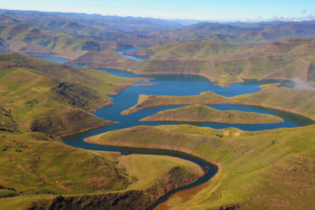The levels of the Vaal Dam persist to plunge downwards as the country continues to slip deeper into the dry-winter season, prompting the Department of Water and Sanitation to call for behavioural change on the part of water consumers.
Presently, the dam stands at 43.4%, which is down from last week’s 44.1% and 65.3% during the same week last year. Judging from the current levels, the pendulum has been ticking against the dam. Diametrically opposite to the Vaal Dam, the Grootdraai Dam stands at 82.4% this week and down from last week’s 82.8%. The current levels the of the dam surpass the 68.0% it recorded last year at the same time. For the second consecutive week, the Sterkfontein Dam in the Free State floats at 93.9% and is up from 92.5% at the same period last year. The strategically placed Sterkfontein Dam is a reserve dam that was used to replenish the Vaal Dam in 2017 when Gauteng was in the grip of a devastating drought. The Bloemhof Dam fell this week, recording a decline from 100.1% last week to 99.3%. During the same week last year, the dam was floating at full capacity at 101.7%.The Mohale Dam in Lesotho is in a parched state at an all-time low of 8.5%, and down from equally concerning levels of 9.0% last week. In the preceding year at the same time, the dam was below the neutral 50% mark at 33.3%
Also in Lesotho and closely behind the Mohale Dam is the Katse Dam, the levels of which continue to worsen weekly. The dam is presently taking a turn for the worst as it fell from last week’s 32.3% to 31.6%. However, the current levels are an improvement compared to the 23.9% at which it stood at the same period last year. Meanwhile, the Integrated Vaal River System which consists of 14 dams including the Vaal Dam, has decreased from 64.2% last week to this week’s 63.7%. This points to a decrease over time as the dam stood at 69.9% during the same time in the preceding year. The Department of Water and Sanitation in Gauteng urges water consumers to work cooperatively with their respective municipalities to lessen the rate of water use to prevent a dire situation during this winter season. The Department believes that if consumers used water sparingly, it is possible that everyone would have enough water to see them through until the rainy season begins in the next few months.







